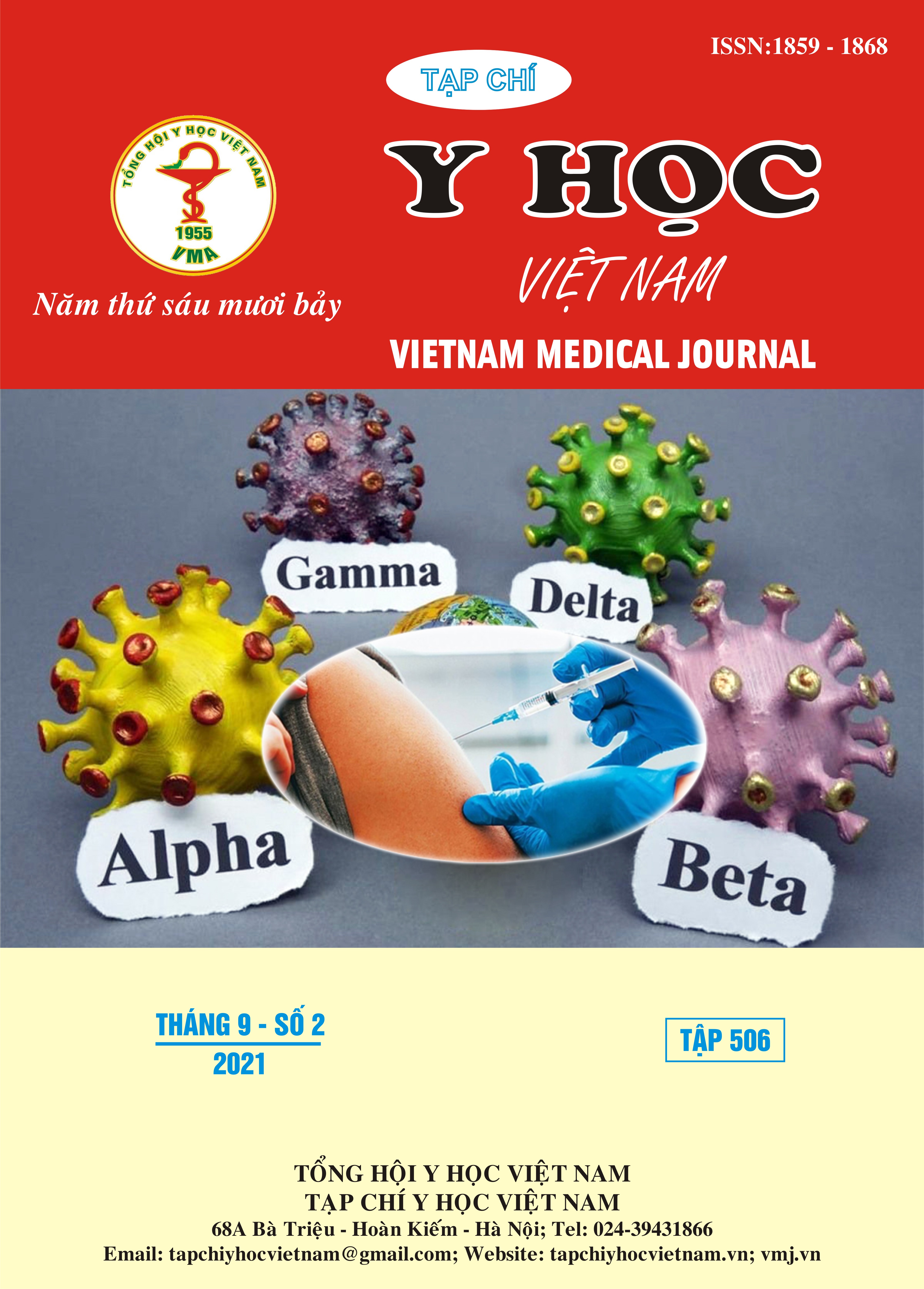RESEARCH CLINICAL CHARACTERISTICS AND IMAGE FEATURES OF ULTRASOUND AND MRI OF ADENOMYOSIS
Main Article Content
Abstract
Objective: Describle the clinical symptoms, transvaginal ultrasound (TVS) and MRI features of adenomyosis. Methods: Thirty – one females patients was suspecteduterine adenomyosis in clinic, diagnosed using ultrasound and MRIat Hanoi Medical University Hospital and General Hospital Tam Anh, were included in this prospective study. We conducted describing and analyzing all imaging feature, which determined adenomyosis from 06/2020 to 09/2021. Results: Mean ageof 42.03 ± 6.4. Abdominal pain during menstrual periode around 90.3%. The morphological uterine sonographic include myometrial cysts was 83.8%, hyperechogenic islands in the myometrium was 83.9%, echogenic subendometrial lines and buds was 32.3%, fan-shaped shadowing was 78.1%, irregular junctional zone account for 12.9% and translesional vascularity on color Doppler ultrasound was 80.65%, poor definition of the endomyometrial junction was 38.7%. There are 27% ofcases with adenomyosis on TVS. The location of the adenomyosis is present in anterior (37.0 %), posterior (81.5%), lateral right (40.7%), lateral left (48.2%) and fundal (63.0%). Adenomyosis are focal accounts for 14.8%, diffuse account for 66.7% and adenomymoma for 18.5%. Presence of cysts in adenomyosis occupies 100%. Lesions arelocated on the inner myometrium (77.8%), the middle myometrium (96.3%) and the outer myometrium (88.9%). The extent of the disease which estimated proportion of the uterine corpus is classified as mild (22.2%); moderate (33.3%) and severe (44.5%). Features on MRI imaging: mixed intensity signal on T1W was 64.5%, on T2W was 48.4%, hyperintenisty signal on T1FS was 9.7% correlatingwith hemorrhage. The averagethickness of the junctional zone is 22.3 ± 17.5mm. Another pelvis diseases correlating with adenomyosis: fibroids (32.3%), simple ovarian cysts (9.7%), endometriosis ovarian (32.3%), ovarian teratoma (6.5%). Conclusion: In clinically suspected adenomyosis cases TVS should be favoured as the primary diagnostic tool. MRI may be considered when TVS is inconclusive. MRI represents an accurate evaluation tool for adenomyosis, allowing its diagnosis and detection of associated pathologies. The most important MR finding in making the diagnosis is thickness of the junctional zone exceeding 12 mm.
Article Details
Keywords
Adenomyosis, magnetic resonance imaging
References
2. Gordts S, Grimbizis G, Campo R. Symptoms and classification of uterine adenomyosis, including the place of hysteroscopy in diagnosis. Fertility and Sterility. 2018;109(3):380-388.e1. doi:10.1016/ j.fertnstert.2018.01.006
3. Champaneria R, Abedin P, Daniels J, Balogun M, Khan KS. Ultrasound scan and magnetic resonance imaging for the diagnosis of adenomyosis: systematic review comparing test accuracy. Acta Obstetricia et Gynecologica Scandinavica. 2010;89(11):1374-1384. doi:10.3109/00016349.2010.512061
4. Bosch TV den, Bruijn AM de, Leeuw RA de, et al. Sonographic classification and reporting system for diagnosing adenomyosis. Ultrasound in Obstetrics & Gynecology. 2019;53(5):576-582. doi:10.1002/uog.19096
5. Chamié LP, Blasbalg R, Pereira RMA, Warmbrand G, Serafini PC. Findings of Pelvic Endometriosis at Transvaginal US, MR Imaging, and Laparoscopy. RadioGraphics. 2011;31(4):E77-E100. doi:10.1148/rg.314105193
6. Agostinho L, Cruz R, Osório F, Alves J, Setúbal A, Guerra A. MRI for adenomyosis: a pictorial review. Insights Imaging. 2017;8(6):549-556. doi:10.1007/s13244-017-0576-z


